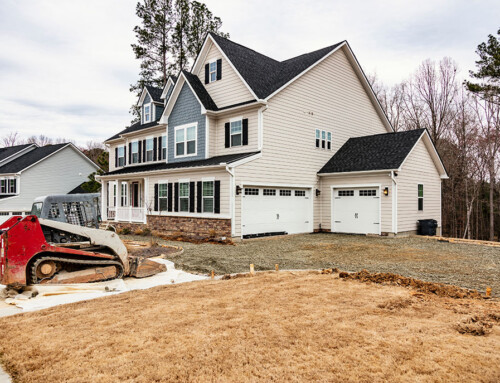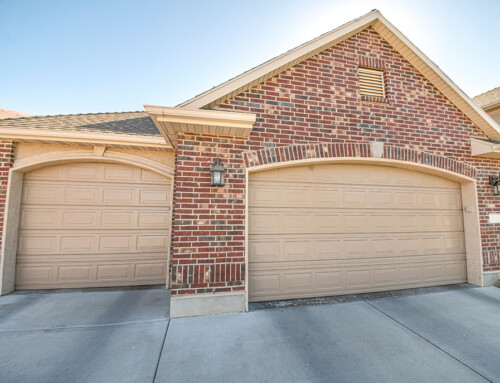
Investing in a new asphalt driveway is a significant upgrade to your property, enhancing curb appeal and providing a durable, long-lasting surface for your vehicles. Understanding the installation process is crucial for ensuring a smooth project from start to finish. A professional paving project involves several distinct stages, each requiring precision and expertise to guarantee a high-quality result. From the initial site assessment to the final curing period, knowing what to expect helps you prepare your property and appreciate the craftsmanship involved in laying a new surface.
This guide outlines the key phases of a professional residential asphalt driveway installation. We will detail the meticulous preparation of the sub-base, the application of the asphalt, and the critical finishing touches. By understanding these steps, you can feel confident in the process and the value being added to your home. Our commitment is to execute each project with the utmost professionalism, ensuring your new driveway meets the highest standards of quality and durability.
The Critical First Step: Demolition and Sub-Base Preparation
The longevity and performance of your new asphalt driveway depend entirely on the foundation beneath it. The first physical step in the installation process is the demolition and removal of any existing surface, whether it’s old, cracked asphalt, concrete, or pavers. Our crews utilize specialized equipment to break up and haul away the old material, clearing the area for a completely new build. This phase ensures that no underlying issues from the previous surface can compromise the integrity of the new one. Once the old surface is removed, the focus shifts to preparing the sub-base.
Proper sub-base preparation is arguably the most critical stage of the entire installation. The existing soil is graded to establish the correct slope for effective water drainage, preventing pooling and water damage in the future. A layer of aggregate, typically crushed rock, is then applied and compacted to create a stable, solid foundation. This aggregate base provides the necessary support structure for the asphalt, distributing the weight of vehicles evenly and preventing shifting or settling over time. Without a properly compacted and graded sub-base, even the highest quality asphalt will fail prematurely. We dedicate significant attention to this foundational work to guarantee structural stability for years to come.
Paving and Compaction: Laying the New Surface
With a solid and properly graded sub-base in place, the project moves into the paving phase. Hot mix asphalt, heated to approximately 300°F (150°C), is transported to your property in specialized trucks designed to maintain its temperature. The asphalt is then distributed over the prepared sub-base using a paving machine. This equipment lays the asphalt at a consistent, specified thickness, ensuring a uniform surface across the entire driveway. Our skilled operators carefully manage the paver to create clean edges and seamless coverage, paying close attention to the transition points at the roadway, garage, and any walkways.
Immediately following the application of the hot asphalt, the compaction process begins. This step is time-sensitive and critical for creating a dense, durable, and smooth surface. A heavy, industrial roller is used to compact the asphalt, pressing the aggregate particles together and eliminating air pockets. Multiple passes are made with the roller in a specific pattern to achieve the optimal level of density. Proper compaction is essential for the driveway’s strength and its ability to withstand traffic and harsh weather conditions. This final step in the construction process locks in the structural integrity of the pavement, leaving you with a smooth and resilient new driveway.
Ensuring a Lasting, High-Quality Finish
The installation of a new asphalt driveway is a structured process that relies on expert execution at every stage. From the thorough demolition and precise grading of the sub-base to the careful application and compaction of the hot mix asphalt, each step is performed to ensure a durable and aesthetically pleasing result. A professionally installed driveway not only improves your home’s curb appeal but also provides a reliable surface that will serve you well for many years. Understanding this process allows you to see the value and expertise invested in your property’s enhancement.
Frequently Asked Questions About Residential Asphalt Driveway Installation
How long before I can use my new asphalt driveway?
It is essential to allow the new asphalt to cure properly before subjecting it to the weight of vehicles. We recommend keeping all vehicles off the new surface for a minimum of 3 to 5 days, though this can vary depending on air temperature and humidity. You can typically walk on the driveway after 24 hours. For the first month, it is also advisable to avoid parking in the exact same spot every day and to refrain from making sharp turns with your steering wheel while the car is stationary, as this can cause scuffing on the fresh surface.
What is the ideal time of year to install an asphalt driveway?
Asphalt installation is best performed during warmer, drier months. The ideal ambient temperature for paving is 70°F (21°C) or higher. This is because the hot mix asphalt needs to retain its heat to be properly worked and compacted. Paving in cold weather can cause the asphalt to cool too quickly, leading to poor compaction and a less durable surface. Therefore, we typically schedule new residential installations from late spring through early fall to ensure the highest quality and longest-lasting results.
At TopWest Asphalt Ltd., we are proud to be a leading name in asphalt paving and maintenance, serving clients throughout Langley, Chilliwack, Mission, Maple Ridge, and Abbotsford. We can undertake paving projects of any size with a commitment to prompt and professional service that prioritizes our clients’ needs. If you require a high-quality asphalt solution from a trusted contractor, contact us online or call us at (604) 755-0300 to receive an estimate.





